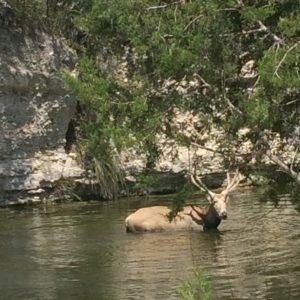Ag & Wildlife Tax Exemptions
Check out the videos on this page to learn more about Ag & Wildlife Tax Exemptions and how they can save you a lot of money on your Property Taxes. Property taxes are locally assessed taxes levied by local taxing units. The county appraisal district appraises property located in the county, while local taxing units set tax rates and collect property taxes based on those values. Land that qualifies for an agricultural appraisal also referred to as an Ag Exemption, has a lower taxable value for property tax purposes. Qualified Ag Exemption properties are based on the land’s capacity to produce agricultural products, crops, timber and livestock, such as: cattle, poultry, pigs, goats and horses, rather than its market value.
Ag & Wildlife Tax Exemptions
What is an Ag Exemption?
An Ag Exemption is not actually an Exemption, but rather a Special Tax Appraisal/Valuation. If a portion of, or all of a property is deemed eligible to receive an Agricultural Valuation, that property will receive a Production Value along with its Market Value. The taxes for exempt acreage will be taxed on the production value of that land, instead of the typical market value of the land.
Can I get tax savings if my property received Ag Valuation?
The tax savings that a property receives depends on the current Market Value of the property and what type of Ag Valuation you are requesting. Native Pasture areas can have a lower Ag valuation than Dry Crop areas and generally both are lower than the market value that the taxes would normally be based on.
How and when do I apply for Ag Valuation?
You may apply for Ag Valuation between Jan 1st and April 30th of the year in which you are seeking the Ag Valuation.
How are the production values set for Ag Exempt properties?
Pastureland values are based on typical income minus typical expenses using a cash lease method.
How many acres do I need to qualify for an Ag Exemption?
Bandera County has a diverse range of soil types that require more acreage in some areas than others to produce the same amount of product, therefore the typical minimum acreage is 20 acres depending on the soil type. You can see soil breakdowns by clicking here.
What types of activities can qualify for Ag Valuation?
There are many activities that may qualify your land for Ag Valuation and those can be found in the Agricultural Intensity Standards. Click on the link below for more information.
See- Bandera County Ag Exemption Intensity Standards
Wildlife Exemptions
Why would I want a wildlife exemption?
I highly recommend Wildlife Exemptions to my clients who simply don’t want to deal with livestock. Alot of my customers are retired and they travel quite a bit and when they are home they would rather feed the deer and watch the hummingbirds than doctor cattle or chase goats. Of course my buyers would like to lower their cost of property ownership, so the Wildlife Exemption is the obvious way to go. Many landowners turn to the Texas’ wildlife management appraisal due to a lack of grass production caused by drought or overgrazing. In many instances, landowners depend on a neighbor or acquaintance to run livestock or cut hay on their property. to maintain their Ag Exemption. A switch to the wildlife exemption allows these landowners to put the property’s tax status in their own hands.


A wildlife exemption is an alternative form of Ag Exemption with the same favorable tax implications as an ag exemption. The wildlife tax valuation is not a true “exemption” but a special valuation approved through a constitutional amendment (Proposition 11, passed in 1995).
The Wildlife Exemption is the exact same tax break as the Ag Exemption. However, instead of producing food or fiber as a prudent farmer or rancher, you would focus on wildlife management. To convert from agricultural use to wildlife management in Bandera County, the land size has to be 20 acres or greater and it has to have the five out of seven-year history of agricultural use. This 20-acre minimum only applies to tracts which have changed size from the prior year. Some properties that qualified for their Ag Exemption prior to the 20 acre minimum have been allowed to keep their Ag Valuation Status, however when the property is sold the buyer may not be able to keep the ag valuation.
Developing your Wildlife Exemption Plans
First, you have to look at your property and develop a wildlife management plan that would show what you are currently doing. Also, included within the plan, you will identify the elements you will add to your plan for the next five years. Based on your property, you identify target animals (deer, turkey, quail, dove, song birds, ducks, etc.). Once you have your target animals, you identify at least three of seven qualifying items to do for each animal identified. These seven items are as follows: Based on your property, you identify target animals (deer, turkey, quail, dove, song birds, ducks, etc.). Once you have your target animals, you identify at least three of seven qualifying items to do for each animal identified. These seven items are as follows:
Wildlife Exemption Activities
- Supplemental Food
- Habitat Control
- Supplemental Water
- Erosion Control
- Supplemental Shelter
- Predator Control
- Census Count (require knowledge to be included yearly in the annual update)
Click to See Wildlife Management Guidelines
Click below to see what we have featured on the market
https://www.banderatexasrealestate.com/featured-listings-2/
Ag/Timber Tax Exemption Eligibility Requirements:
Activities that DO NOT qualify and are not eligible:
- home gardening;
- horse racing, boarding or training;
- trail rides and zoos;
- florists or similar retailers who maintain plants prior to sale;
- wildlife management and conservation;
- hunting and fishing operations, including aerial hunting;
- predator control and/or wildlife/livestock;
- censuses or surveys;
- commercial fishing; and
- companion animal (pet) breeding and kennels.
Who DOES qualify for an Ag/Timber Number?
A person, including a non-Texas resident, engaged in the production of agricultural or timber products for sale in the regular course of business is eligible for an Ag/Timber Number. This number can be used to claim an exemption from Texas sales tax on the purchase of qualifying items.
- Persons in these groups are eligible for an Ag/Timber Number:
- Farmers and ranchers who raise agricultural products to sell to others;
- Persons engaged in aquaculture and agriculture; (i.e. commercial fish farms or bee keepers)
- Custom harvesters
- Persons engaged in agricultural aircraft operations, as defined by 14 C.F.R. Section 137.3 (crop dusting)
- Commercial nurseries engaged in fostering growth of plants for sale (i.e., growing stock from seed or cuttings, replanting seedlings in larger containers)
